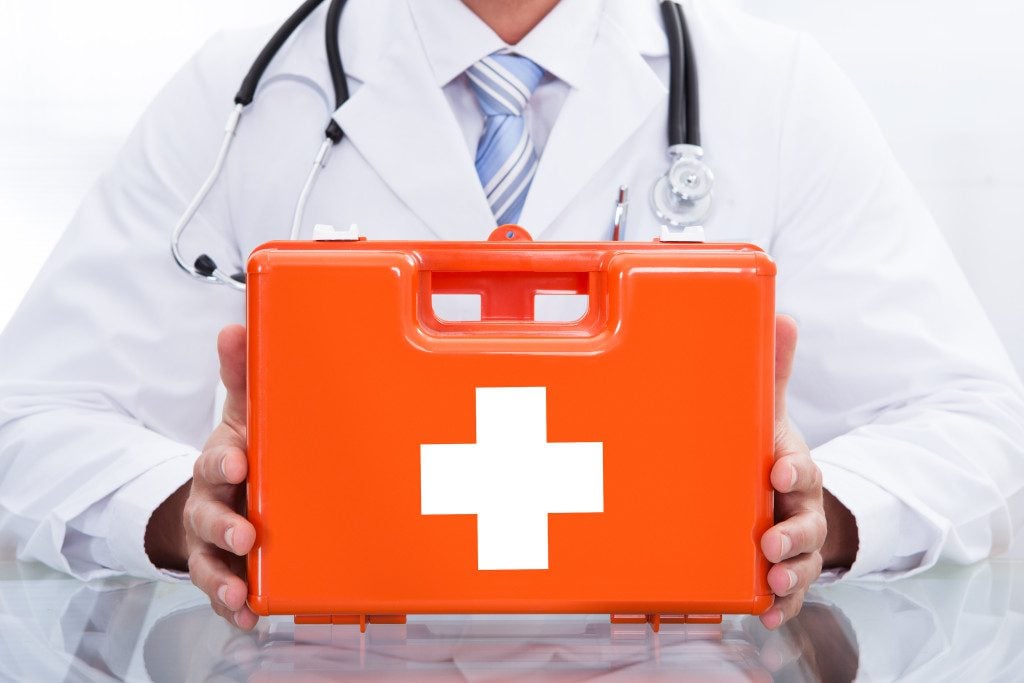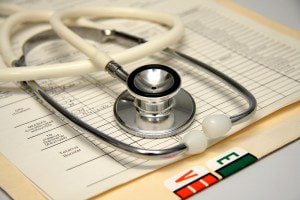Why ALL Homes should have a First Aid Kit
 Take a look in any home’s bathroom cupboards (especially those with children) and you’re likely to find at least the bare minimum of first aid supplies: a box of adhesive bandages, antiseptic and rubbing alcohol are often likely suspects. However, this would only be sufficient if scrapes and small cuts were the sole injuries that could be suffered - and we all know that’s not the case! Here then, are some often overlooked reasons why a good first aid kit and its contents are imperative for every household.
Take a look in any home’s bathroom cupboards (especially those with children) and you’re likely to find at least the bare minimum of first aid supplies: a box of adhesive bandages, antiseptic and rubbing alcohol are often likely suspects. However, this would only be sufficient if scrapes and small cuts were the sole injuries that could be suffered - and we all know that’s not the case! Here then, are some often overlooked reasons why a good first aid kit and its contents are imperative for every household.
A FIRST AID KIT IS ALWAYS BETTER THAN A ‘MEDICAL AREA’
One of the inherent advantages of a first aid kit is that it is a single unit - where everything you need can be found. It’s no different than having a pencil case as opposed to ‘an area for pencils’. Despite your best efforts, some things placed in a general area will be misplaced, missed and forgotten about. Whether you’re buying all the components separately or purchasing a pre-made first aid kit, all the items being in a suitable, stand-alone container of some sort is always best. If you’ve only got one, a portable one might be best but ensure this is always kept in the same place. Having a fixed first aid kit in the house’s main bathroom as well as a portable one is always a great idea.
ONE SIZE (AND TYPE) OF BANDAGE DOES NOT FIT ALL INJURIES
 Small adhesive bandages, colloquially known as ‘Band-Aids’, have proven to be excellent for small scrapes and cuts. However, although they come in different sizes, they simply aren’t feasible for larger lacerations and bruises. For these, there are special conforming bandages and non-adherent bandages (gauze or otherwise) that require hypoallergenic, skin-safe tape to be properly applied. All these things can and should be found in a first aid kit. (Pro-tip: for gauze type bandages, buy larger sizes - they can always be cut down.) Another thing to consider is that there are bandages necessary for completely different injuries. The elastic or ‘Ace’ bandages found in first-aid kits provide compression to muscle sprains and strains and possible fractures, for example.
Small adhesive bandages, colloquially known as ‘Band-Aids’, have proven to be excellent for small scrapes and cuts. However, although they come in different sizes, they simply aren’t feasible for larger lacerations and bruises. For these, there are special conforming bandages and non-adherent bandages (gauze or otherwise) that require hypoallergenic, skin-safe tape to be properly applied. All these things can and should be found in a first aid kit. (Pro-tip: for gauze type bandages, buy larger sizes - they can always be cut down.) Another thing to consider is that there are bandages necessary for completely different injuries. The elastic or ‘Ace’ bandages found in first-aid kits provide compression to muscle sprains and strains and possible fractures, for example.
SPECIALTY ITEMS/REGULAR ITEMS DEDICATED TO FIRST-AID
On a regular visit to the grocery, it’s easy to remember to pick up a box of Band-Aids. However, there are other items that you’re far less likely to pick up individually (and sometimes aren’t available at your grocery or drugstore at all. Activated charcoal, saline eyewash, eye pads and dedicated-use itch relief solutions are some examples. (Instructions for the use of these items will come with a purchased first-aid kit and should always be read.) Each first aid kit should also contain its own scissors for cutting of bandages, tape and clothing, tweezers for the removal of splinters and the like and other such simple devices. It’s not sufficient to rely on other household examples of these as this may result in infection. In the same way, use of your first-aid implements for other purposes can do the same as well as shorten their lifespan. Dedicated cotton swabs, bulb suction devices (‘turkey basters’) and syringes are further examples. Various online retailers carry fully stocked first aid kits, making it easy to check everything off of the list with one purchase.
SANITATION
As previously mentioned, avoiding infection and keeping first-aid kit items sanitary are always important considerations. Purchased first-aid kits include a number of items to assist in this. Latex gloves are imperative, protecting both the wearer and the person receiving first aid. Another very important inclusion in any good first aid kit are sealable bags for the disposal of used items that have come into contact with body fluids and first aid solutions.
ACCESSIBLE EMERGENCY NUMBERS AND MEDICAL INFORMATION
 These are also incredibly important features of a first aid kit that are often overlooked. In an emergency, precious time wasted flipping through a notebook or searching for a phone number can prove disastrous. A first aid kit is the best place to place information such as contact numbers for your local poison control centre, emergency room and family doctor as well as medical information for family members such as allergies and medications. Ensure they are placed in a highly visible place and teach small children to pass this information on to adults and medical personnel in the event of your absence.
These are also incredibly important features of a first aid kit that are often overlooked. In an emergency, precious time wasted flipping through a notebook or searching for a phone number can prove disastrous. A first aid kit is the best place to place information such as contact numbers for your local poison control centre, emergency room and family doctor as well as medical information for family members such as allergies and medications. Ensure they are placed in a highly visible place and teach small children to pass this information on to adults and medical personnel in the event of your absence.
It’s clear that a well stocked first aid kit ensures that adequate care can be taken of minor and moderate injuries in the home. It is indeed possible with proper direction and a willingness to search out harder to find items to stock your own first aid kit piece-by-piece. However, this was a task more necessary when first aid kits were rare and exorbitantly expensive. Now, a store bought kit that you can be sure contains nearly everything you need is quite reasonably priced and there are even third party retailers such as Mediband brand and MediBC.com that offer a wide range at further discounted prices. There’s not only a myriad of reasons why all homes should have a first aid kit; there’s no reason at all not to!


2 Comments